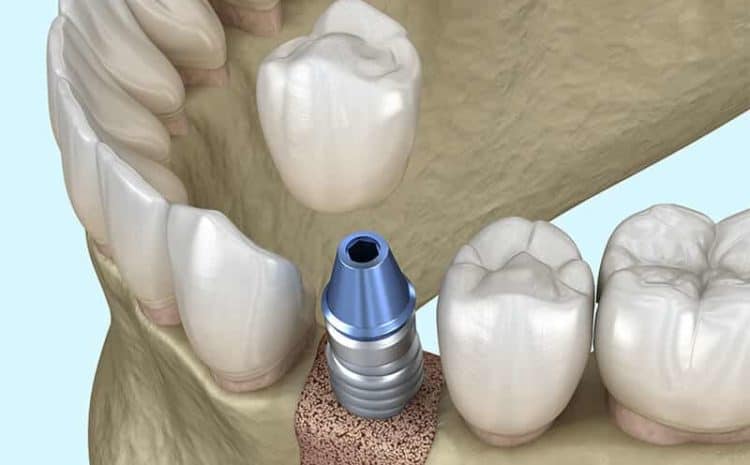
Bone Grafts for Dental Implants: Building Strong Foundations for Smiles
In dental practice, implant reconstruction is an essential daily procedure to restore broken teeth, improve performance, and improve esthetics. A dental practitioner's awareness of implant system functionality and positioning for optimal clinical outcomes is common knowledge. This is not the case when it comes to learning bone grafting requirements and techniques, which are the cornerstone of implant therapy.
Why is bone grafting procedure necessary?
Implant placement necessitates adequate bone volume and biologic consistency. This is attributable to the implant’s structure, which requires specific dimensional properties for long-term survival.
Other causes that necessitate bone grafting procedure include –
- ridge resorption after tooth extraction
- the presence of bony defects caused by fracture or infection
- the need to position implants in strategic locations for functional and esthetic performance. The underlying bone structure determines the shape of the soft tissue.
The selection of a suitable surgical procedure and graft material is vital for bone graft placement. Despite using high-quality graft material, the graft can resorb or fail to integrate due to poor planning or execution. Hence, the bone grafting procedure technique, along with proper expertise, is crucial for successful treatment.
How much bone should be present around the implant?
A minimum of 1 mm of bone is needed around a dental implant as a general rule. When an implant is placed next to a tooth or another implant, more room is required (2 and 3 mm, respectively). A bone graft will be needed if there is not enough bone to surround the implant properly.
When determining the height of bone, the aim is to get enough bone to submerge the implant properly. However, it’s essential to be sure the implant doesn’t reach too far and interfere with other anatomical structures (e.g., the nerve in the bottom jaw or the sinus in the upper jaw). There could not be sufficiently vertical space when inserting implants in the upper jaw, necessitating a sinus raise to reconstruct bone.
What are the standard bone grafting procedures?
The four most commonly used bone grafting procedure techniques used for dental implant treatment are –
- Socket Grafting: When a tooth is lost, a cavity is formed in the bone (inside the gums). Dr. Adatrow might choose to fill this cavity with a bone graft material that acts as a foundation around which bone cells migrate and form a layer of new bone cells.
- Ridge Augmentation: Dr. Adatrow will use this technique when there is too much bone loss after a tooth loss. In this instance, the dentist uses an allograft to fill the gap (created by tooth loss) to restore the bone’s former shape.
- Ridge protection procedures help limit horizontal and vertical bone loss after an extraction. Studies have shown that ridge preservation can significantly preserve ridge width and height. External augmentation treatments on the alveolar ridge, whether lateral or longitudinal, are more challenging than internal augmentation procedures on the maxillary sinus.
- Sinus Lift Procedure: For teeth missing in the upper jaw, this method is widely used by making an incision in the maxillary sinus or the region behind the upper jaw. The tissue of the sinus is pushed upwards, and bone tissue is filled into the cavity formed. Dr. Adatrow will wait for a few months after the operation is performed to allow the jaw to heal and remodel to help implant stability eventually.
When is the right time to perform bone grafting procedure?
Dr. Adatrow can perform bone grafts simultaneously as or before dental implant surgery, based on the case’s complexity. Although it is preferable to insert the implant and graft simultaneously to save time in the treatment room, this is not always possible.
If a dental bone graft is required before the implant placement, it is critical to adhere to the timelines. The graft would not have had enough time to regenerate and solidify if the implant is inserted too quickly after the graft. If the implant is inserted too soon after the graft, the graft can resorb and melt, resulting in a loss of bone volume.
As a result, implant positioning is planned for the right time with adequate healing but limited resorption.
Need Bone Grafting Procedure in Mississippi? Dr. Adatrow can help!
If you have any further questions about how bone grafts or dental implants, you can schedule a consultation with Dr. Adatrow to clarify all your doubts. Dr. Adatrow has more than 18 years of experience in placing dental implants, with a success rate of over 97%, and can provide you with the best possible dental treatment. He is a Board-Certified Prosthodontist and Periodontist. Please contact our office to schedule your consultation now!
About Advanced Dental Implant and TMJ Center
Advanced Dental Implant and TMJ Center provides personalized and specialized dental treatment for patients in Desoto County, MS and Memphis, TN areas. Dr. Pradeep Adatrow is Specialist in Dental Implants and Gum Diseases and provides patients with customized treatment plans to meet the oral health needs of his patients. Dr. Adatrow is the only practicing board-certified Periodontist and Prosthodontist in the South East United States. He earned his Doctor of Dental Surgery and Post Graduate Prosthodontic Training from the University of Tennessee College of Dentistry and his Post Graduate Training in Periodontics from Indiana University. Dr. Adatrow is board certified by the American Board of Periodontology and is a Fellow of the prestigious International College of Dentistry. Along with a devoted team of dental hygienists, assistants, and administrative staff, we strive for excellence in customer satisfaction. Please visit our website at www.advanceddentaltmj.com or call us at (662) 655-4868 to schedule a consultation.



